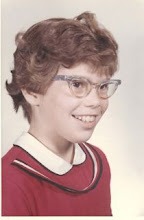It is an honor to host Conrad Wesselhoeft on my blog today. In addition to being a fabulous writer of books for young adults, Conrad is a very kind and thoughtful person. So kind and thoughtful I know he will forgive me for the glitch that caused the delay in the posting of his essay today. Take it away, Conrad!
 |
| Conrad Wesselhoeft |
In Praise of Place:
Why fiction writers should light
out for personal territory
By Conrad Wesselhoeft
In my mid-twenties, I fell in love with northeast New Mexico—the high plains, broken mesas, and rich, drifting light. I lived for two years in the town of Raton, working as a journalist for a local newspaper.
The vistas enthralled me. Much of the time, they looked flat and dull, but at certain times of day, under certain light, they exploded with beauty.
Several years ago, when I started writing my young-adult novel Dirt Bikes, Drones, and Other Ways to Fly, I wanted to re-capture that special landscape. I visualized a setting and jotted these notes:
“The country around is a hundred muted shades, washed, streaked, and bled. The nearby mesas are scarred with dirt-bike tracks, an insult to Mother Nature, but a playground for Arlo Santiago and his friends.”
Arlo is the novel’s 17-year-old adrenaline-junkie narrator. He loves to blast across the mesas on his Yamaha 250 dirt bike, hitting the bumps and flying high.
My goal was to have Arlo fit organically into this landscape. I wanted him to respond to the monotonous-one-minute, staggering-the-next horizons, just as I had.
Whether I pulled it off is not for me to say. What I did learn, however, is how important setting can be to a story—so important, in fact, that it can become a galvanizing character in its own right.
Too often, writers overlook setting in favor other characterization tools. The result is that New York City appears no different in the mind’s eye than Portland, Oregon, and the Grand Canyon exudes all the gravitas of a touched-up postcard.
It’s as if the writer had stuck a pin on a map and said, “I think I’ll set my story here.”
But when setting works—when a writer dips into his or her own life and bares emotions connected with a place—the results can be glorious.
Scott O’Dell’s love for California’s coastal islands shimmers on every page of Island of the Blue Dolphins. You more than hear the gulls cry, waves crash, and wind blow. The island on which the narrator Karana lives seems alive.
Lois Lowry drew on ambivalent memories of growing up on military bases to create the stark, regimented world of her 1993 dystopian novel The Giver.
C.S. Lewis based his sweeping Narnia vistas on the Mountains of Mourne in Northern Ireland. About them, he wrote: "I have seen landscapes . . . which, under a particular light, make me feel that at any moment a giant might raise his head over the next ridge.”
In every case the writer traversed a personal geography to inform a fictional one. His or her emotional connection to a real place grounded the reader in an imagined place.
When a writer soaks up the spirit of a town, city, island, mesa—or just about anywhere else—that place can inspire a profound fictional setting.
A great story puts you there, so that you see and feel the landscape around you. Writers get there by digging into their personal geography and listening for the heartbeat.



This post reminded me of the writing of Tony Hillerman and how much he used place as a character. Thanks for this. It has good information for other writers to mine.
ReplyDelete